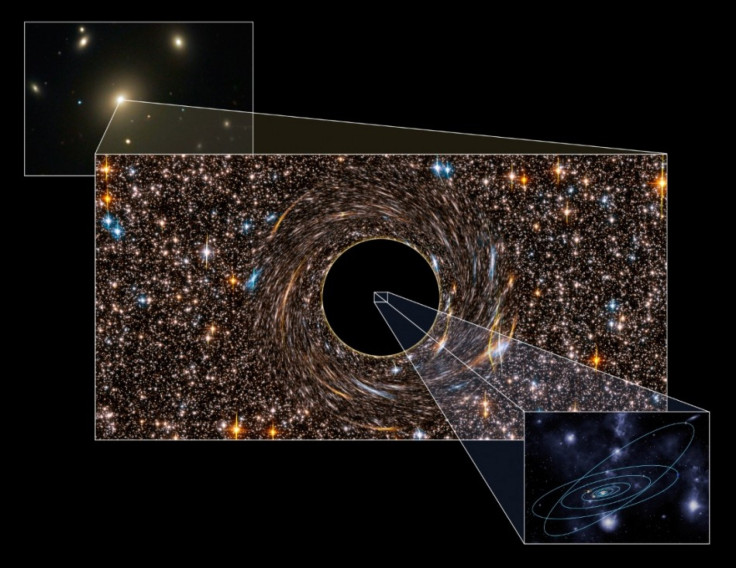'Cosmic-Record Breaking' Black Holes Discovered: 10 Billion Times Bigger than Sun

Sometimes, what is happening in the cosmic world sounds so far, far away. It is difficult to imagine what is happening out there but thanks to advanced technology, we can get to know even the awesome discoveries that are being made. And, the discovery of gigantic black holes - 10 billion times bigger than our Sun - is one such discovery.
Berkeley scienctists have discovered two massive black holes beyond ou galaxy - they are probably the biggest ever known in the universe, and they are 10 billion times bigger than our sun. One lie at the center of the brightest galaxy, NGC 3842 within the 'Leo' galaxy cluster, about 320 million light-year away. The other resides in NGC 4889, the brightest galaxy, within the 'Coma Berenices' galaxy cluster 336 million light-years away from earth.
The report of the astronomers led by Chung-Pei Ma, a professor of astronomy at University of Berkeley, was published in the journal Nature, titled “Two ten-billion-solar-mass black holes at the centres of giant elliptical galaxies.”
Black hole is known as a region of spacetime with strongest gravity in universe from which nothing, even light, can escape. Despite its invisible interior, the presence of a black hole can be inferred though its interaction with companion stars and its mass should be measured indirectly by the speed of companion stars swirling around black hole due to its gravitational pull.
Typically there are two ways of formation of a black hole. A black hole is created at the time of collapse of a super-sized star called Supernova. Another way a black hole is created is when two galaxies merge and they make a bigger galaxy.
It also allows their black holes, which exists in the center of its galaxy, to be merged to form a bigger black hole.
In this way, the newly-discovered black holes give very interesting result. Usually the mass and size of black hole can be predicted by so-called 'galaxy properties', its well-known relationship between the stellar velocity dispersion or bulge luminosity of the host galaxy and the mass of its central black hole. So basically the bigger the galaxy, the bigger its black hole inclines to be.
But this newly-found two cosmic-record breaking black holes (almost twice as big as the previous biggest-ever black hole, which sits at the center of a nearby galaxy called M87 and has a mass of 6.7 billion times the Sun) appear to be bigger than its relationship would otherwise suggest. It is supposed to be 6 billion times bigger than the Sun. Their 'event horizon'- so called 'the point of no return" the area within which the gravitational pull becomes so great as to make anything escape impossible, not even light, are 7 times bigger than the size of our solar system or 200 times the orbit of Earth. And each of their masses is 2,500 times heavier than the black hole which in the center of our galaxy - Milky Way.
So we wonder - what happened? How did these black holes come into being?
“They are monstrous...We did not expect to find such massive black holes because they are more massive than indicated by their galaxy properties. They’re kind of extraordinary,” said Ma, head of the research team.
The discovery of the black holes, however, may throw light on the formation of parent galaxies, which may have evolved differently.
“This rare find will help us understand whether these black holes had very tall parents or ate a lot of spinach - gulping up surrounding gas,” Ma said.
The scientists used the Gemini North and Keck 2 telescopes in Hawaii, the McDonald Observatory in Texas and the Earth-orbiting Hubble space telescope.
© Copyright IBTimes 2024. All rights reserved.




















